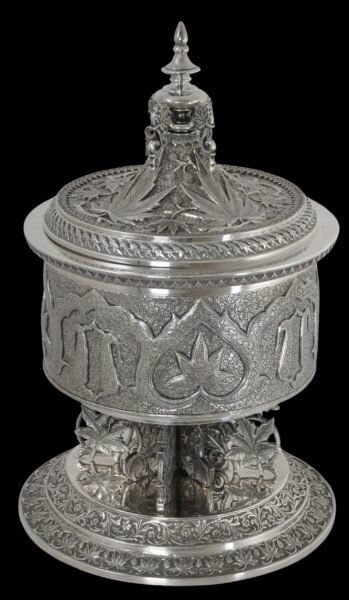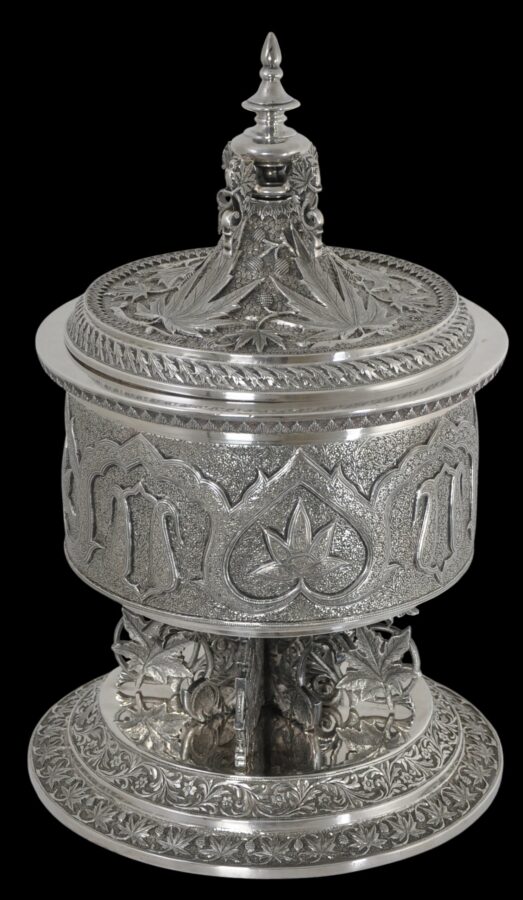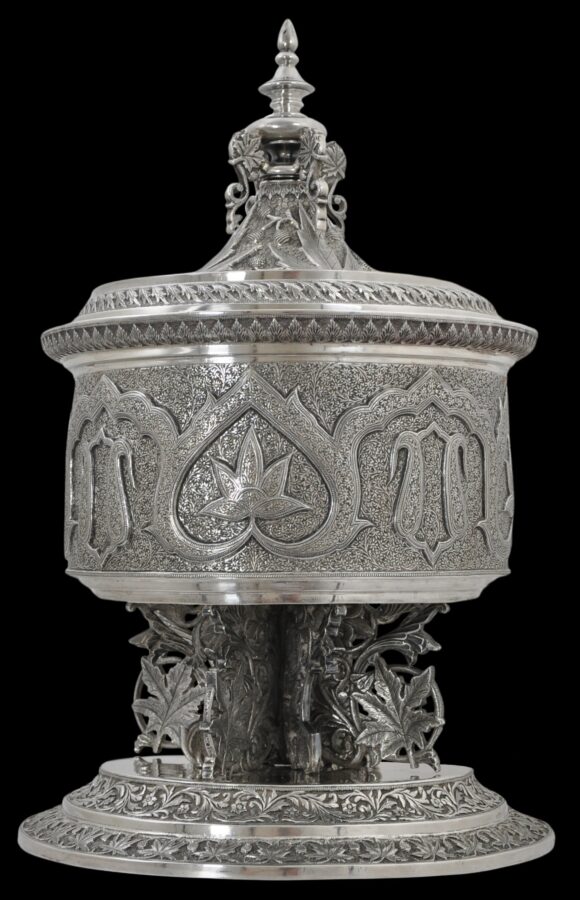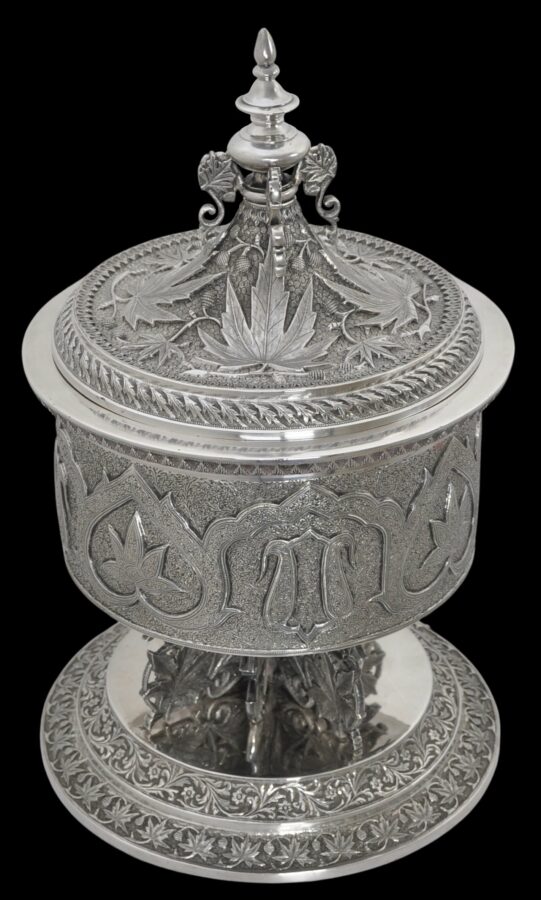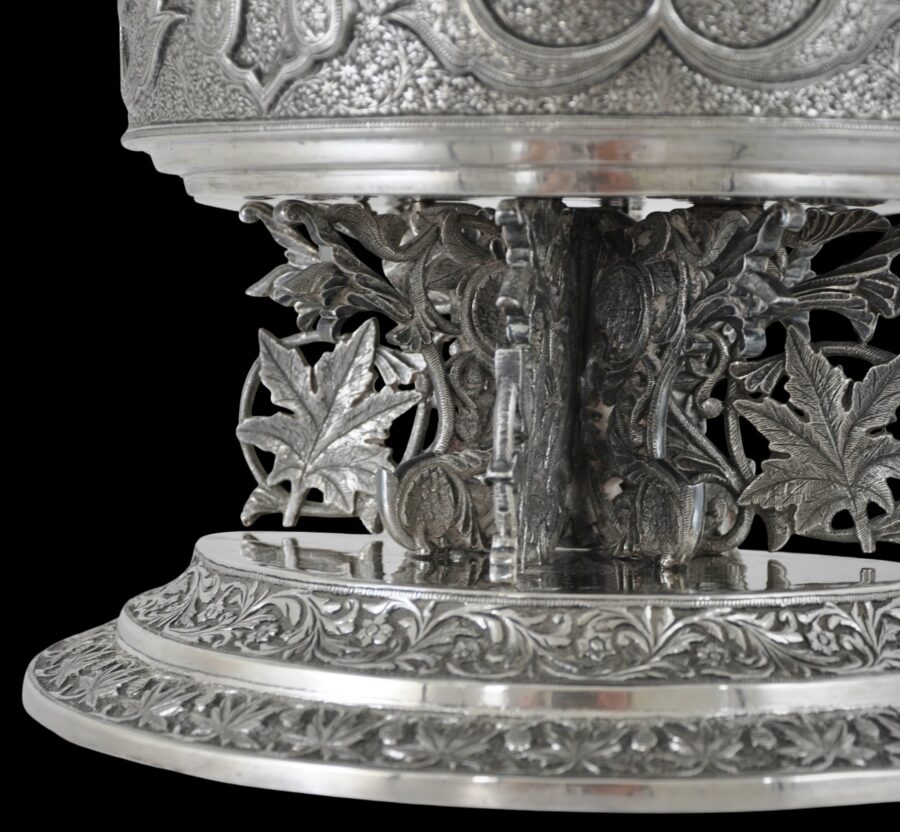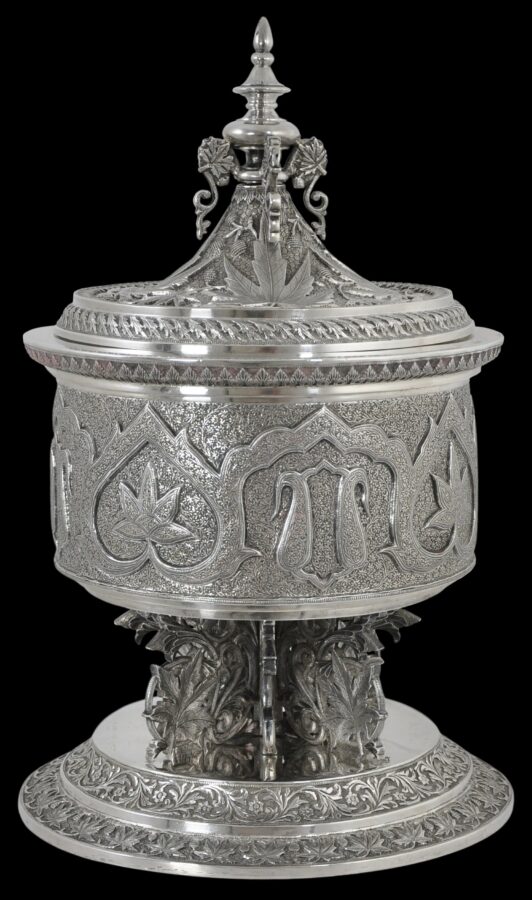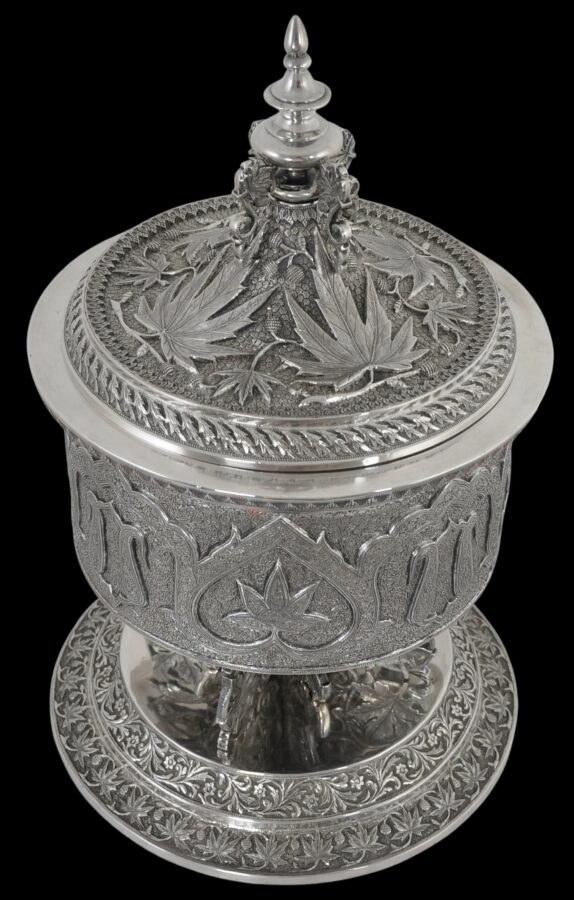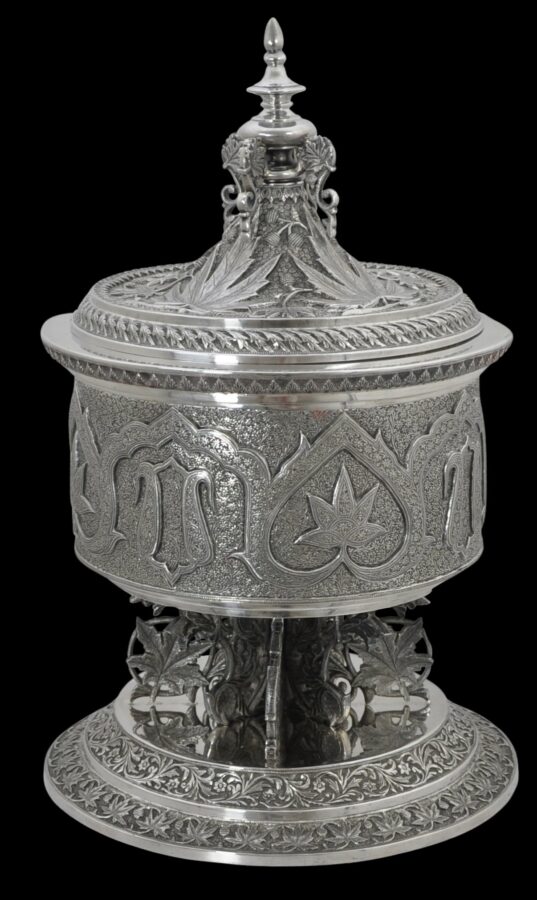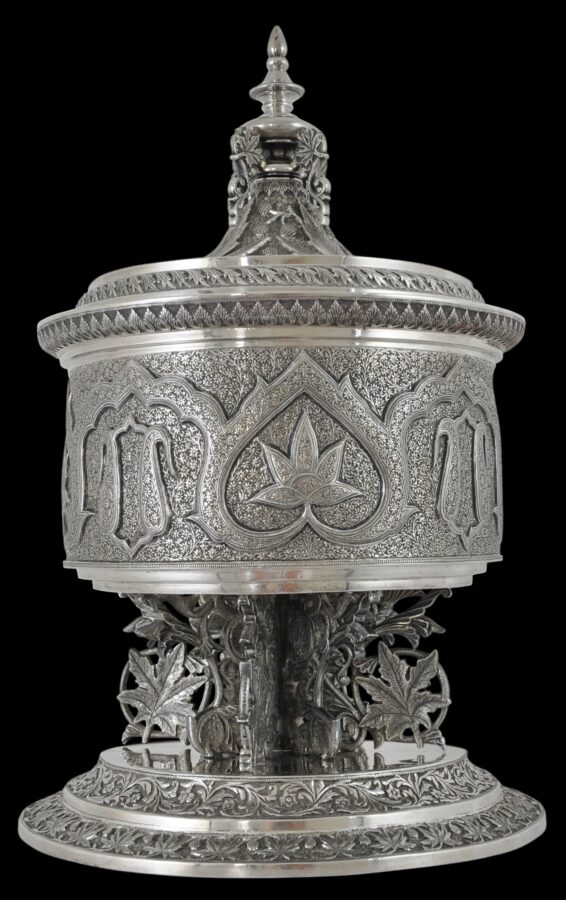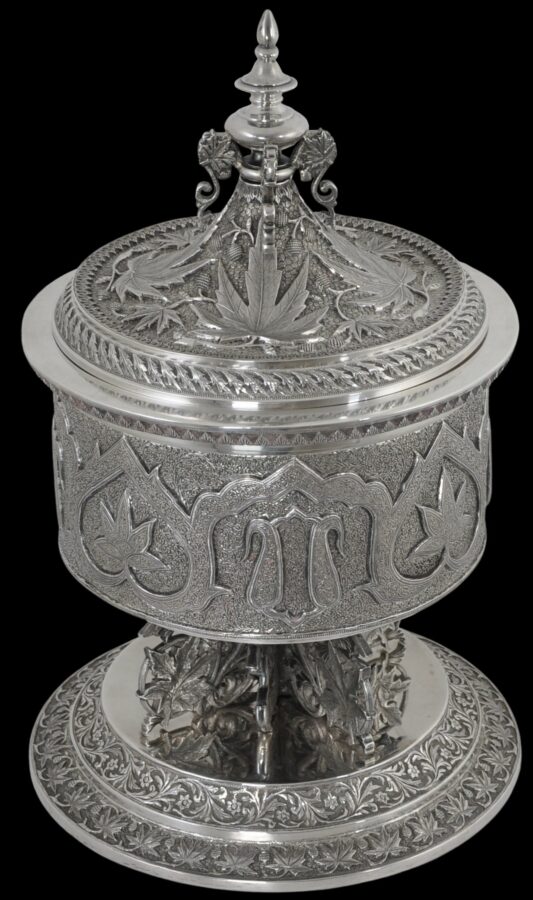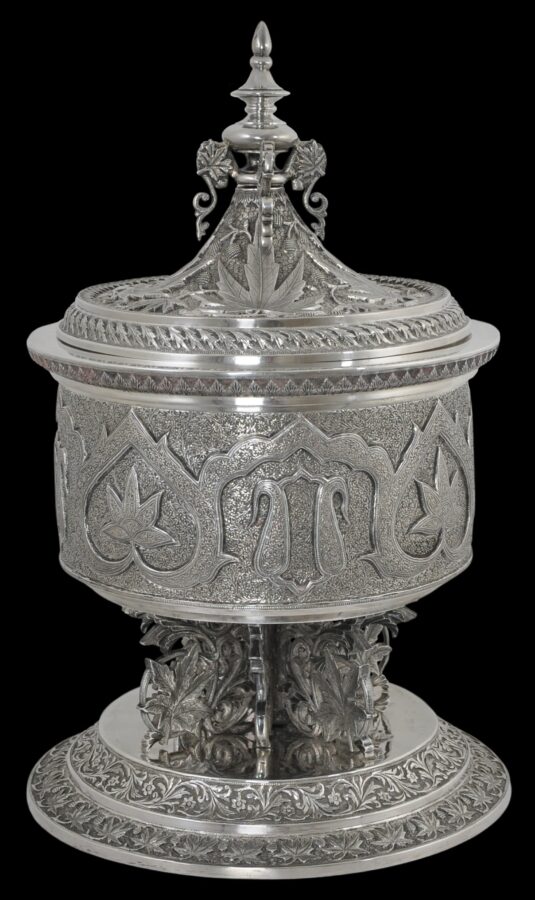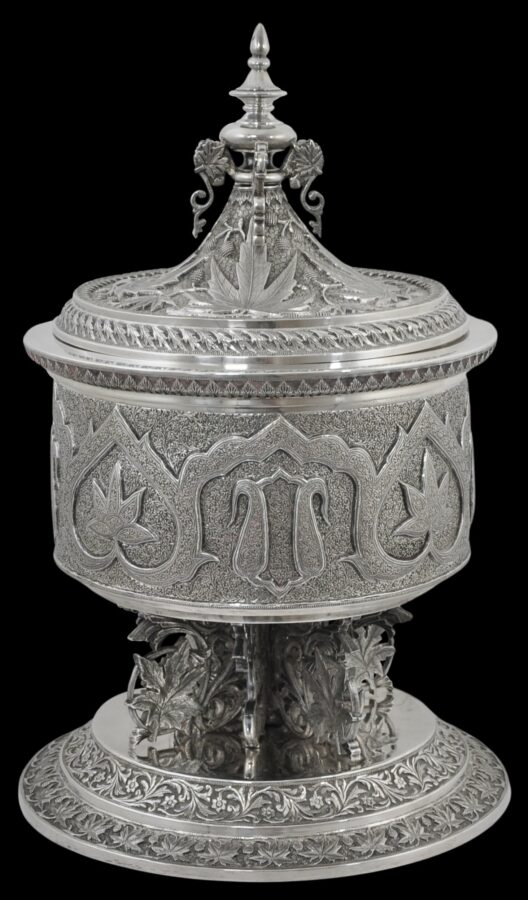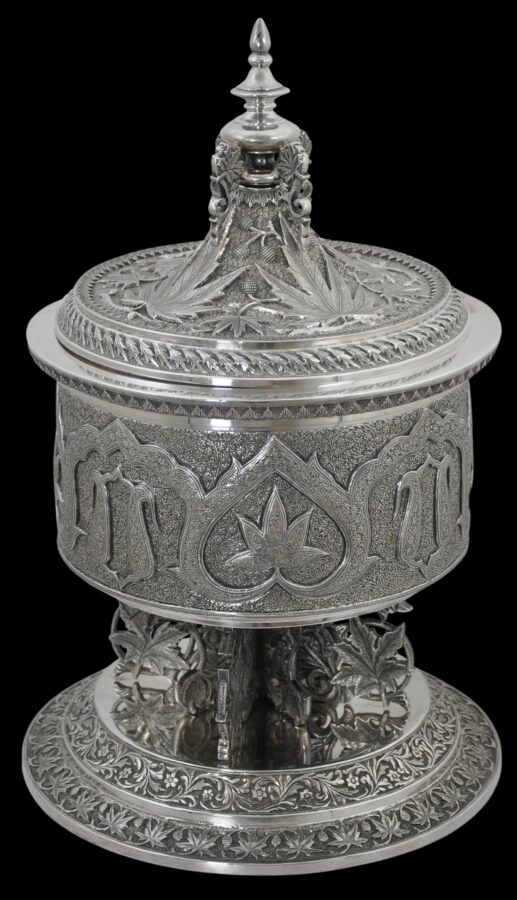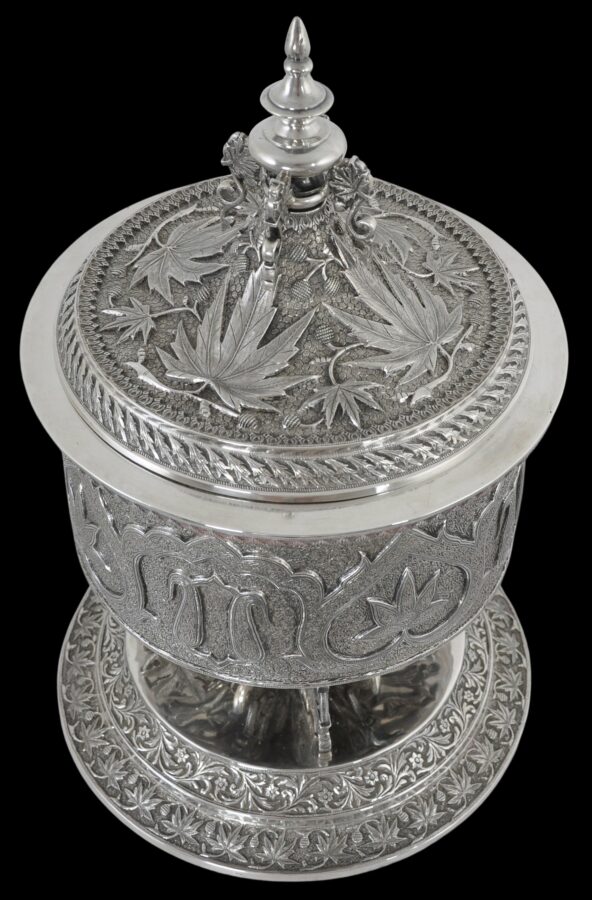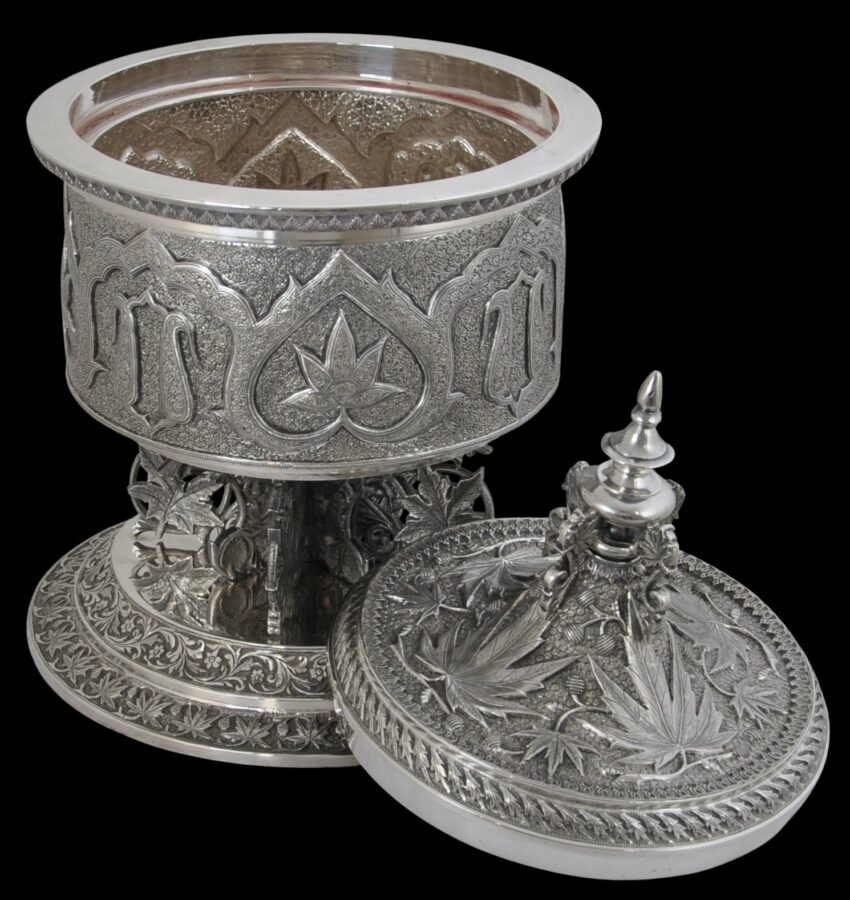This stunningly elaborate table centrepiece is one of the largest examples of Kashmir silver produced during the colonial period and most probably the heaviest – it weighs around 6.5 kilograms (229 ounces)!
The silver used is particularly high-grade and pure (higher than sterling) and the walls are impressively thick.
The form appears based on a traditional ceremonial betel or paan box used in Burma and might well have been intended to serve locally as a particularly opulent paan or betel box and stand. Here is an example of such a Burmese silver betel box and stand:
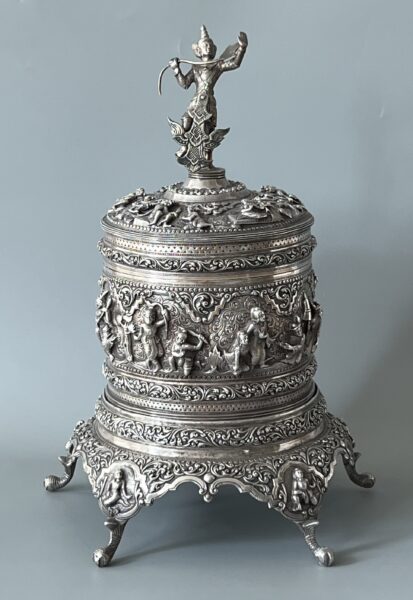
It comprises a wide, tiered base on which eight pierced supports rest. These support a wide, round dish which is fitted with a heavy, domed cover that rises to an elaborate finial.
The centrepiece is chased with typically Kashmiri, Islamic and Persian-inspired vegetal motifs.
The cover is decorated in relief with large chinar leaves and seeds pods (the chinar tree is known in Europe as the plane tree – the chinar or plane tree is indigenous to Kashmir), as is the outer edge of the base. The eight supports are in the form of elaborately cast and worked chinar leaves and there are more chinar leaves about the finial.
The body of the vessel is cast and chased with raised paisley or kunj patterns, all against a dense background of fine coriander flowers and leaves.
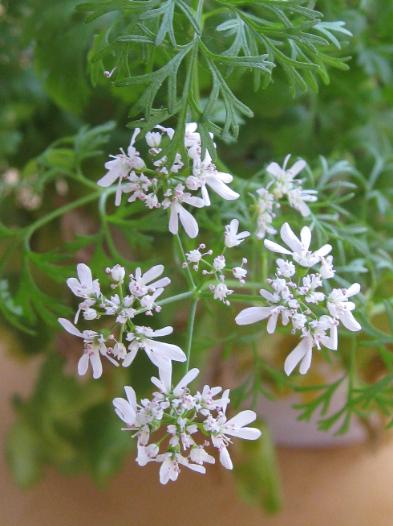
Above: The flowers and fine leaves of the coriander plant, a motif used in Kashmiri silver and extensively on this centrepiece.
The centrepiece might have been commissioned for the colonial European market or was made for a local ruler. It might have also been an exhibition piece. The form however, as mentioned, seems based on the spectacular silver betel boxes of Burma, which is not surprising given the colonial and trade links between India and Burma but also the fact that Burmese silversmiths are known to have operated in India and influenced local silversmiths with their motifs and forms.
Most probably made in Kashmir, it is also possible that it was made in the Sikh holy city of Amritsar where many Kashmiri silversmiths settled in the wake of the Sikh invasion of Kashmir in 1819 (Wilkinson, 1999, p. 108).
This is a spectacular, monumental piece, appropriate for an important collection or museum. It is in perfect condition and is heavy and particularly striking. It represents the pinnacle of indigenous silversmithing in the Kashmir Valley.
References
Dehejia, V., Delight in Design: Indian Silver for the Raj, Mapin, 2008.
Watt, G., Indian Art at Delhi 1903, Being the Official Catalogue of the Delhi Exhibition, 1902-1903, Superintendent of Government Printing, India, 1903.
Wilkinson, W.R.T., Indian Silver 1858-1947, 1999.


